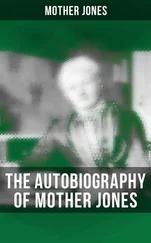The picture looks pretty confused already. Now that it is possible to use DNA to examine it in more detail, things have got even more complicated. What seemed to be the same defence mechanism in separate places turn out to be genetically quite different. Scores of distinct deletions of bits of the haemoglobin chain are found, as are many different protective cell-surface cues. Altogether, hundreds of mutations have been pressed into service in the struggle. What is more, the same mechanism (sickle cell, for example) has turned up independently in populations a long way apart. Several distinct foci of the sickle gene, each associated with a different set of variants in the adjacent DNA, are known from Africa, with another from India.
A few patches of sickle-cell haemoglobin are found in Europe, where in some places the mutation is carried by people with white skins. One is in the town of Coruche, in central Portugal, where malaria was once common. Most of its inhabitants 1DNA resembles that of other Europeans, but the DNA around their sickle-cell gene is of a type only found in West Africa. The Portuguese brought home the first slaves in 1444 and, a century later, the Algarve was filled with Africans and rheir children, a high proportion of whom had a white parent. Many of these children must have carried sickle cell. This protected them against the local disease so that the African gene flourished and spread although those for black skin were absorbed into the local population and, after hundreds of years, lost from sight.
The malaria story has many lessons for evolution. In any revolution, the mob grabs whatever is at hand to make a rough and ready barrier which, even if it does not stop the forces of repression, slows them down. Natural selection has responded to disease in the same way. Whenever a mutation which might be useful turns up it is used to try and halt the invader. In different places, different genes become available, and the first at hand is used even if it was not the best. The solution which emerges may be wasteful and inefficient, but an ability in 'make do and mend' is characteristic of evolution. It explains why no creature is a beautiful solution to the problems of its own history and why life is, basically, such a mess.
There is a famous anatomical example of the expediency of existence. In all mammals, one of the cranial nerves takes a slight detour around a vertebra in the neck. In giraffes the neck is much extended — but the nerve, far from taking a short cut direct to the brain, goes all the way down to the bottom and back up again. Awkward solutions to an evolutionary dilemma are common and can influence molecules as much as nerves. Perhaps they will explain why most of the structure of DNA also seems to be, to put it bluntly, a shambles.
When faced with an emergency, people often turn to crude solutions that turn out to be expensive in the long run. Evolution does the same. Some of the protective mechanisms against malaria damage those who use them. When the sickle-cell mutation first appeared it was rare, so that almost every copy was partnered by an unchanged gene. This combination protects against infection and leaves its carriers in good general health. As sickle cell became more common, people with two copies of the altered haemoglobin, one from each parent, appeared. They suffer from sickle-cell anaemia, a severe (and sometimes lethal) ailment. Their red cells collapse even when the parasite has not entered, to give a range of symptoms that include brain damage, heart failure and paralysis. In some places, around one child in ten is born with the condition. That is a high price to pay for protection, but is unavoidable once a population starts using the gene. Some of the other mechanisms (including the thalassaemias) incur the same cost. As more than one person in twenty worldwide carries one or other of these genes, hundreds of thousands of children with inherited anaemias arc born each year. This does not add much weight to the idea of natural selection as a benign designer.
Other variants which we now see as inborn disease may themselves be, like sickle cell, relics of a defence against infection (perhaps against illnesses which have now disappeared). Sickle-cell anaemia is found in American blacks, who are not exposed to malaria. If its association with infection elsewhere in the world was not known its presence in that racial group would be a mystery. Other ethnic groups have their own inborn illnesses. One Ashkenazi Jew in thirty is a carrier of the gene for Tay-Sachs Disease. Those who inherit two copies suffer from a fatal degeneration of the nervous system. Families who carry this gene may have had ancestors more resistant to tuberculosis than the average. As TB was common in the European ghettos from whence most of them came, Tay-Sachs might perhaps be the relic of a system of protection against infection. The cost is still being paid by their descendants. Other diseases — such as ankylosing spondylitis, or 'poker spine' — tend to strike people who carry certain cell-surface antigens. Perhaps this too is a relic of natural selection by lost diseases.
Malaria has other attributes which make it a remorseless enemy. Many diseases have been beaten by vaccination. A weakened version of a parasite can persuade the body to produce antibodies which will attack the real thing. The eradication of smallpox is the most spectacular example of this approach. The malaria vaccine has proved a will-of-the-wisp. Plasmodiunt is enormously variable. One of its many surface antigens (which would have to be mimicked by any successful vaccine) exists in fifty different forms. Dozens may be found in just one village. The parasite's sex life makes things worse. Several genes, scattered all over its fourteen chromosomes, produce cell-surface antigens. Every time Plasmodium has sex, they are reshuffled into new and unique combinations. Many patients with malaria are infected with more than one strain, so that new mixtures appear all the time. It will be many years — if ever — before malaria goes the same way as smallpox. It is such a subtle and effective opponent that the genes that protect against it will be needed for a long time yet.
Disease may say more about human diversity. Even the ABO blood groups system might result from its actions. The A and B variants differ in just seven bases in the thousand or so that code for them; O has a single DNA base missing part-way down the message, which scrambles all the text from there onwards and removes part of the cell-surface structure coded for by this gene. AB individuals have some protection against childhood diarrhoea and, more important, against cholera, while those with O are more susceptible to that infection (but might be more resistant to malaria). Other genes, too, seem to be associated with resistance. Perhaps ancient illnesses explain a lot of our diversity. Nevertheless, plenty of infections have gone for ever. Optimists claim that the conquest of disease, cold and starvation means that natural selection has come to an end. If evolution has one rule, it is to expect the unexpected. New pestilences may appear and cause as much damage as malaria, or those that seem near extinction will stage a resurgence, as has malaria itself.
The history of the battle against disease says useful things about natural selection. Far from designing a simple and effective protection, whenever a straw appears, it is clutched at. Selection acted like a handyman rather than a craftsman. Its products often seem badly, not to say extravagantly, planned and roughly made. If man is indeed made in God's image, malaria does not say much for divine engineering. This haphazard approach has its strengths. Used by engineers or computer programmers it can make subtle and unexpected things. The logic of selection is that of the living world: to produce a complicated design without a designer.
Читать дальше
Конец ознакомительного отрывка
Купить книгу












